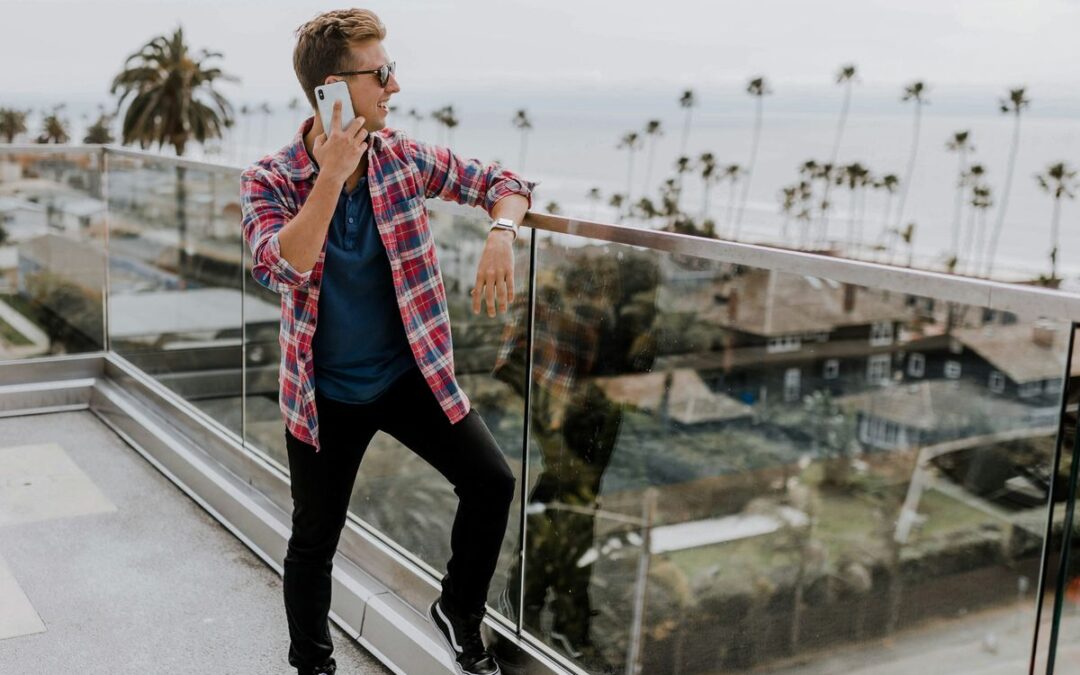Why Image Optimization Matters
TL;DR: Image optimization is crucial for Shopify stores as it improves page speed, enhances user experience, and boosts conversions. Key strategies include using modern formats like WEBP and AVIF, applying lazy loading for non-essential images, and leveraging responsive images with srcset and sizes. Preloading critical images optimizes Largest Contentful Paint (LCP), while Content Delivery Networks (CDNs) reduce load times and enhance stability. Proper implementation ensures fast, visually appealing pages that improve search rankings and drive sales.
Image optimization is crucial for Shopify stores. It significantly enhances user experience by accelerating page load speed. Faster pages not only engage users but also increase conversion rates, directly impacting your bottom line.
Optimized images play a key role in improving essential performance metrics such as Largest Contentful Paint (LCP) and Cumulative Layout Shift (CLS). LCP measures how quickly the largest visible content loads, while CLS focuses on stability by preventing unexpected layout shifts during loading. Both are critical for a seamless user experience.
- Improved Load Times: Faster image loading means users stay engaged and conversions rise.
- Enhanced Metrics: Better LCP and CLS scores lead to higher search rankings and happier customers.
- User Satisfaction: Smooth and stable pages enhance overall satisfaction, reducing bounce rates.
Balancing Quality and Speed
Balancing quality and speed is essential for optimizing Shopify images. Large image files can dramatically slow down page load times, affecting performance metrics like Largest Contentful Paint (LCP). This impacts user experience and conversion rates.
To maintain image quality while ensuring fast loading, it’s vital to reduce file sizes without sacrificing visual appeal. Using modern file formats such as WEBP and AVIF can achieve this balance. These formats offer superior compression, preserving quality while minimizing size.
Compression tools are also crucial. They reduce file sizes effectively, making images load quicker. Employing these tools before uploading is a smart strategy for enhancing speed without losing quality.
- Modern Formats: Adopt WEBP and AVIF for better compression and quality.
- Compression Tools: Use these to reduce file sizes, ensuring fast load times.
- Responsive Images: Leverage Shopify’s
image_urlfilter for optimal formats.
For further insights on improving your Shopify store’s performance, explore our dedicated Shopify resources which cover essential strategies like UI/UX design and security best practices.
Key Performance Metrics
Image optimization directly influences critical performance metrics like Largest Contentful Paint (LCP) and Cumulative Layout Shift (CLS). Images are often the largest elements on a page, making quick loading essential for maintaining user engagement and optimizing conversion rates.
LCP measures how quickly the main content loads, impacting user perception of site speed. Delays in loading large images can hurt this metric, leading to a poor user experience. Ensuring images are optimized reduces load times, enhancing LCP performance.
CLS focuses on stability. Images without reserved space can cause content to shift as they load, disrupting the user’s interaction with the page. Reserving space through width and height attributes or using CSS aspect-ratio can prevent these shifts, improving CLS scores.
Strategies for Optimizing Images:
- Lazy Loading: Apply to non-critical images to enhance loading speed. This defers the loading of images until they’re needed, improving initial page load times.
- Size Attributes: Use width and height in
<img>tags to reserve space, reducing layout shifts. - Efficient Formats: Convert images to formats like WEBP or AVIF for better compression.
These strategies ensure your Shopify store not only meets but exceeds user expectations, driving better engagement and conversion outcomes. For a more comprehensive understanding of how user interface and experience impact customer interactions and conversion rates, explore our insights on the critical role of UI/UX design in e-commerce development.
Responsive Image Techniques
Responsive images are essential for ensuring optimal display across various devices. Utilizing srcset and sizes attributes enables browsers to select the most suitable image size, enhancing both performance and user experience.
Implementing srcset allows you to provide multiple image sizes and resolutions. This flexibility ensures that users on different devices receive the best quality image for their screen size, without unnecessary loading time.
The sizes attribute works in conjunction with srcset to inform the browser about the intended display size of the image. This helps in selecting the perfect fit, optimizing loading times and visual presentation.
The <picture> tag is another powerful tool. It allows serving different images based on screen size and device characteristics. This feature is useful for art direction, where layout and design elements vary across devices.
srcsetAttribute: Offers multiple image sizes and resolutions for optimal display.sizesAttribute: Guides the browser on image display size, ensuring efficient loading.<picture>Tag: Serves different images for diverse screen sizes and orientations.
By integrating these responsive image techniques, your Shopify store will deliver fast, high-quality visuals across all devices. This enhances user satisfaction and supports better conversion rates, aligning with top performance standards. For more insights on optimizing Shopify stores, you can explore our Shopify Ecommerce Development and SEO improvements which focus on enhancing user experience and conversion rates.
Optimizing Image Formats
Optimizing image formats improves web performance on Shopify. Choosing the right formats speeds up loading while keeping image quality high. Newer formats like WEBP and AVIF work great. They compress images better, making file sizes smaller without losing clarity. This makes your site faster and more responsive for users.
Shopify’s image API helps pick the best format for different devices automatically. This ensures optimal performance across all screens. Your site works better for all users and loads faster because of this flexibility.
- WEBP Format: Compresses well and maintains quality, perfect for web use.
- AVIF Format: Compresses even better, keeping image quality while shrinking size.
- Automatic Selection: Shopify’s API smartly chooses the best format, improving device compatibility.
These strategies align with our commitment to optimizing e-commerce platforms. Using these image formats and Shopify’s features can boost your store’s performance and make customers happier. A faster site often leads to more engaged customers and higher sales, helping your business grow. For further insights on enhancing your Shopify store, explore our detailed guide on Shopify audits and optimizations, which provides actionable recommendations for improving efficiency and sales.
Preloading Key Images
Preloading key images boosts rendering speed, especially for Largest Contentful Paint (LCP) elements. Setting a high fetch priority ensures these crucial images load quickly, improving performance and user experience.
Preloading prioritizes essential images for your site’s first impression. It loads important visuals early during page load. This speeds up page rendering and lets users see key content faster.
Balance preloading with lazy loading. Preloading speeds up important visuals, while lazy loading delays non-essential images. This optimizes site performance and uses bandwidth wisely.
- High Fetch Priority: Use for LCP images to load faster and improve user experience.
- Preload Strategy: Focus on critical visuals that grab user attention.
- Lazy Loading: Use for secondary images to save bandwidth and speed up load times.
These strategies help your Shopify store deliver a smooth, fast browsing experience. To further enhance your e-commerce platform, explore optimizing e-commerce checkout to increase conversions, which can significantly boost user satisfaction and drive sales.
Tools for Image Optimization
Image optimization is vital for enhancing Shopify store performance. Several tools and practices can streamline this process, maintaining quality while minimizing file size.
Image Compression Tools: Tools like TinyPNG and ImageOptim effectively reduce file sizes without losing clarity. They compress images to load faster, improving user experience.
Format Conversion: Modern formats such as WEBP and AVIF offer superior compression. Tools like Squoosh can convert existing images to these efficient formats, ensuring rapid load times while preserving quality.
Shopify’s Built-in Options: Shopify’s image API generates responsive images automatically. This feature selects the best format for each device, optimizing performance across all platforms.
- TinyPNG: Reduces file sizes for faster loading.
- Squoosh: Converts images to WEBP and AVIF.
- Shopify API: Automates responsive image generation for diverse devices.
For those looking to further enhance their Shopify store’s capabilities, consider exploring Shopify Ecommerce Development and Automation Integrations by Refindable, which offers insights on improving online presence and user experience through strategic enhancements.
Using Content Delivery Networks
Content Delivery Networks (CDNs) enhance Shopify performance by efficiently delivering images. They store images on servers closer to users, reducing load times and boosting site speed. This proximity minimizes the distance data travels, enhancing user experience.
CDNs automatically select the optimal image format for the user’s browser. This ensures fast loading and maintains image quality across devices.
Benefits of Using CDNs:
- Reduced Load Times: Storing images closer to users speeds up delivery.
- Improved Performance: Faster load speeds result in a smoother user experience.
- Automatic Format Selection: CDNs choose the best format for each browser, ensuring compatibility and quality.
For those interested in further enhancing their Shopify store, consider exploring our free Shopify & SEO ecommerce audit to gain insights into optimizing performance and driving growth.
Ensuring Layout Stability
Maintaining layout stability is crucial for a smooth user experience on your Shopify store. Cumulative Layout Shift (CLS) can disrupt this stability if images cause unexpected shifts during loading. To prevent this, it’s essential to reserve space for images from the outset.
Set width and height attributes on your <img> tags. This practice ensures that the browser allocates the necessary space before the image loads, avoiding unwanted shifts. Using these attributes helps in maintaining a consistent layout, enhancing the overall browsing experience.
CSS aspect-ratio is another effective tool. By specifying the aspect ratio, you ensure that images maintain their proportions regardless of the device or screen size. This consistency keeps your content stable and visually appealing.
- Width and Height Attributes: Define these in
<img>tags to reserve space and prevent layout shifts. - CSS
aspect-ratio: Use it to maintain image proportions, enhancing stability across devices. - Consistent Layout: Prioritize techniques that ensure a stable and engaging user experience.
Implementing these strategies aligns with our commitment to optimizing your Shopify store. For more insights on e-commerce development and strategies to boost your online store’s performance, explore our comprehensive blog covering various aspects of e-commerce.
Avoiding Lazy Loading Pitfalls
Lazy loading is a valuable tool for enhancing Shopify store performance, but it must be used wisely. Careful application ensures your site remains fast and user-friendly.
Avoid applying lazy loading to Largest Contentful Paint (LCP) images. These images are crucial for immediate user perception of load speed. Delaying them can negatively impact user experience and site performance metrics.
Effective Use of Lazy Loading:
- Reserve for Non-Critical Images: Use lazy loading for images that aren’t essential for the initial view. This reduces resource usage and speeds up the initial page load.
- Strategic Placement: Identify images further down the page that benefit from delayed loading. This approach ensures that important content loads quickly.
- Automatic Application: Shopify’s
image_tagfeature can automatically apply lazy loading to non-essential images, optimizing performance without manual intervention.
Balancing lazy loading with the need for quick rendering of key content is vital. By prioritizing essential images and deferring non-critical ones, you maintain site speed and user satisfaction. This strategy helps your Shopify store perform optimally, enhancing both engagement and conversion rates. For more insights into optimizing Shopify stores, explore our success story with Gnarly, which details effective strategies for boosting e-commerce performance.
Key Takeaways for 2025
Optimizing Shopify images is vital for e-commerce success. As we move into 2024, focus on strategies that balance image quality with performance. Responsive images are crucial, using techniques like srcset and sizes to ensure the best display across devices. This enhances user experience and speeds up loading times.
Preloading key images helps improve rendering speed, particularly for important visual elements. Combine this with lazy loading for non-essential images to maintain quick load times without sacrificing quality.
Modern formats like WEBP and AVIF offer superior compression, reducing file sizes while preserving image clarity. These formats contribute to faster site performance and better user satisfaction.
Content Delivery Networks (CDNs) further enhance speed by storing images closer to users. CDNs automatically select optimal formats for each device, ensuring compatibility and efficient delivery.





